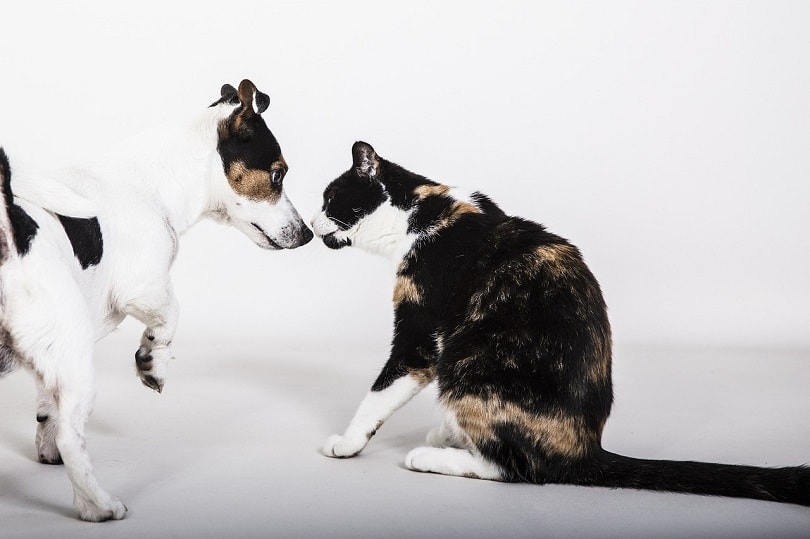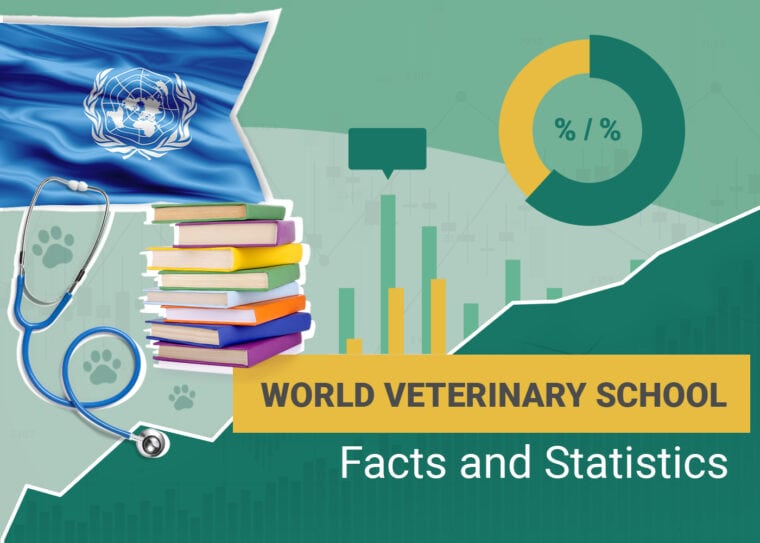
Click to Skip Ahead
Note: This article’s statistics come from third-party sources and do not represent the opinions of this website.
Veterinarians are essential, highly trained professionals that work hard to make our pet’s lives as healthy as possible. There is a wide variety of job opportunities for vets, including small animal practice, large animal practice, specialty care, and research. Vets do far more than just keep animals healthy, though. They provide support and education to ensure animals and people live healthier lives. Being a vet isn’t an easy career, though!
 The 10 Statistics About Becoming a Vet
The 10 Statistics About Becoming a Vet
- The job growth market in veterinary medicine is on an upward trajectory estimated to be 19% between 2021 and 2031.
- At the last evaluation in 2021, there were 86,300 jobs available for veterinarians in the United States.
- Around 92% of veterinarians report high levels of stress related to their careers.
- Suicide rates for veterinarians are 2.1 times higher for males and 3.5 higher for females compared to the general population in the US.
- The median pay of a veterinarian is $100,370.
- 88% of veterinarians report having high levels of student debt.
- Accounting for inflation, veterinary salaries are growing at a rate of 1.9% per year.
- Between 2021 and 2022, pet owners reported spending around $700 per year in vet care for their dogs and $379 per year in vet care for their cats.
- In 2017, the 10 most common medical conditions in dogs and cats cost pet owners $96 million.
- In 2020, US pet owners spent $31.4 billion on veterinary care and other medical care and products.
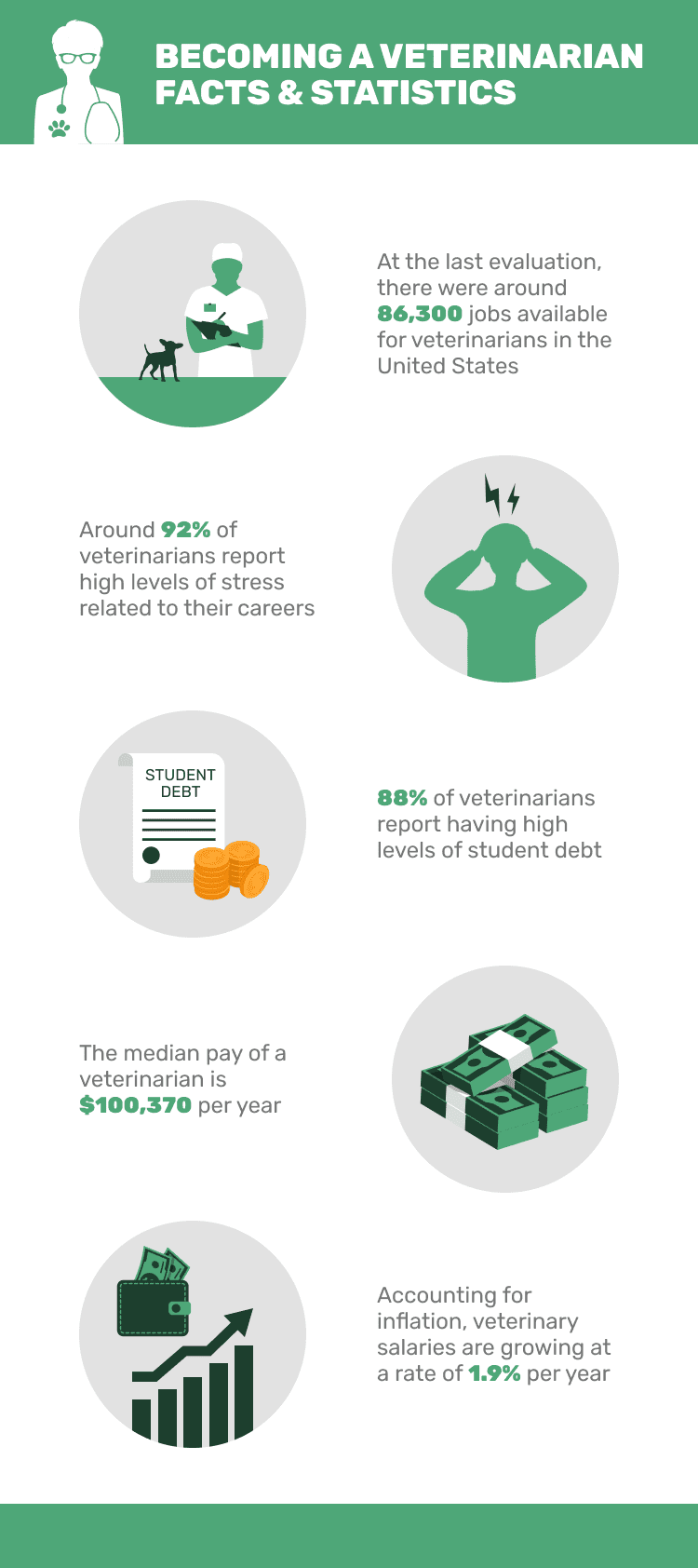
Veterinary Career Field Statistics
1. The job growth market in veterinary medicine is on an upward trajectory estimated to be 19% between 2021 and 2031.
(BLS)
Veterinary medicine has a higher growth rate than most career fields. With an estimated growth of 19% in 10 years, there will be around 4,800 openings for veterinarians every year through 2031.
2. At the last evaluation in 2021, there were 86,300 jobs available for veterinarians in the United States.
(BLS)
In 2021, the US Bureau of Labor Statistics estimated there being 86,300 veterinary jobs available in the United States. This number serves as the baseline number to track the career field growth between 2021 and 2031.

(Merck)
Between September and October 2021, Merck Animal Health performed a survey of 2,495 veterinarians and 448 members of veterinary staff. In that study, 92% of vets and staff reported high levels of stress in their jobs. This number was unchanged between 2019 and 2021, but it slightly increased from 89% in 2017. Although stress levels are high, 56.5% of vets reported high levels of well-being.
4. Suicide rates for veterinarians are 2.1 times higher for males and 3.5 times higher for females compared to the general population in the US.
(CDC)
Even though more than half of the vets surveyed reported high levels of well-being, the high stress levels are extremely wearing. Suicide rates in the veterinary medicine field are much higher than the average population, with male vets being 2.1 times more likely to die from suicide and female vets being 3.5 times more likely to die by suicide. While female vets are more likely to die by suicide, women only account for around 10% of veterinarian suicides.
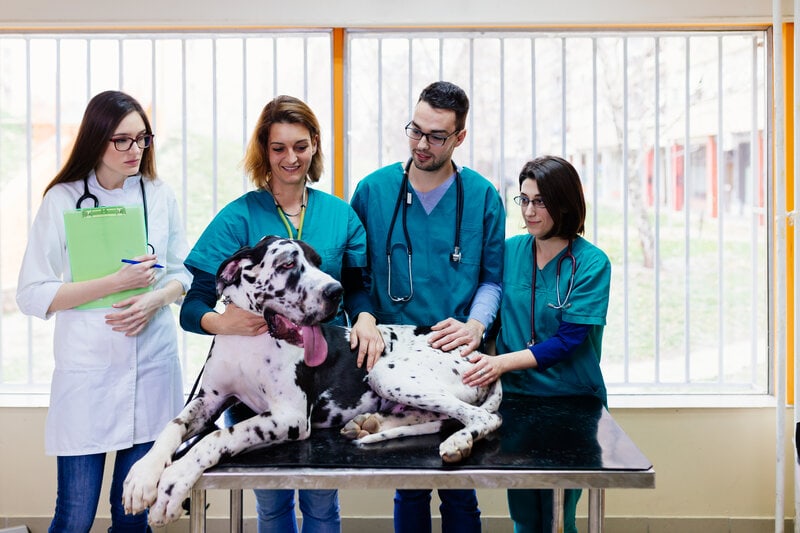
Cost and Income
5. The median pay of a veterinarian is $100,370.
(BLS, AVMA)
While the median pay of a vet is $100,370, there is a wide spread of incomes that vary based on specialty, experience, number of years in practice, and location. In the US, the mean starting pay for vets going into corporate practice is $106,053, while the mean starting pay for vets going into private practice is $93,894.
6. 88% of veterinarians report having high levels of student debt.
(Merck)
Veterinarians are fraught with student loan debt, with 88% reporting high levels of student debt in 2021. Thankfully, this number is down from 91% in 2019 and 2017.
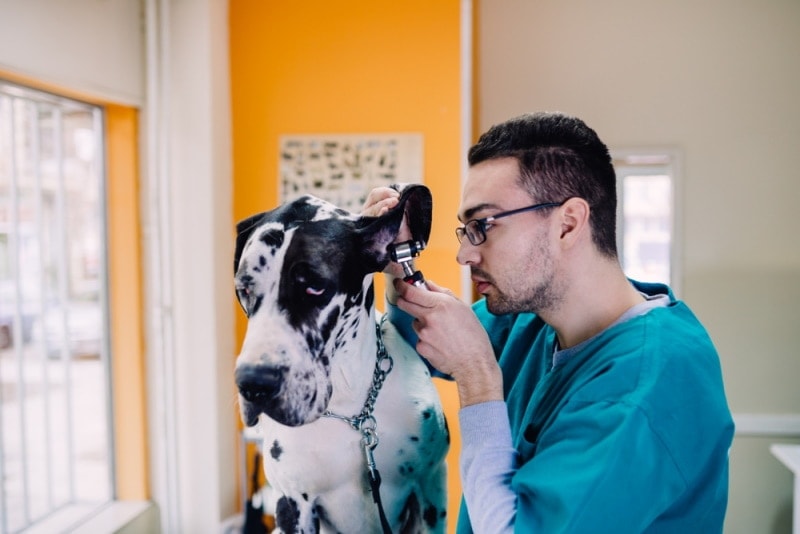
7. Accounting for inflation, veterinary salaries are growing at a rate of 1.9% per year.
(AVMA)
Inflation has continued to cause expenses to rise, and as expenses rise, salaries eventually start to rise as well. While veterinary salaries are growing at a rate of 1.9% every year when accounting for inflation, debt has continued to grow at a rate of 3.5% every year when accounting for inflation.
 Pet Ownership Stats
Pet Ownership Stats
8. Between 2021 and 2022, pet owners reported spending around $700 per year in vet care for their dogs and $379 per year in vet care for their cats.
(APPA)
Dog owners reported spending $458 on surgical vet visits and $242 on routine vet visits for their dogs in a 12-month period, while cat owners reported spending $201 on surgical vet visits and $178 on routine vet visits for their cats.

9. In 2017, the 10 most common medical conditions in dogs and cats cost pet owners $96 million.
(DVM360)
The most common medical conditions in pets can be quite costly, and veterinarians are a necessity in caring for these conditions. In dogs, the most common conditions include skin allergies, ear infections, non-cancerous skin masses, skin infections, and diarrhea or intestinal conditions, while the most common conditions in cats include urinary tract disease, dental disease, vomiting, chronic kidney disease, and diarrhea or intestinal conditions.
10. In 2020, US pet owners spent $31.4 billion on veterinary care and other medical care and products.
(APPA)
While pet owners in the US spent $31.4 billion on vet care and medical expenses in 2020, this accounts for less than a third of what American pet owners spent. Between veterinary care, pet products, and non-veterinary services, Americans spent $103.6 billion on their pets.
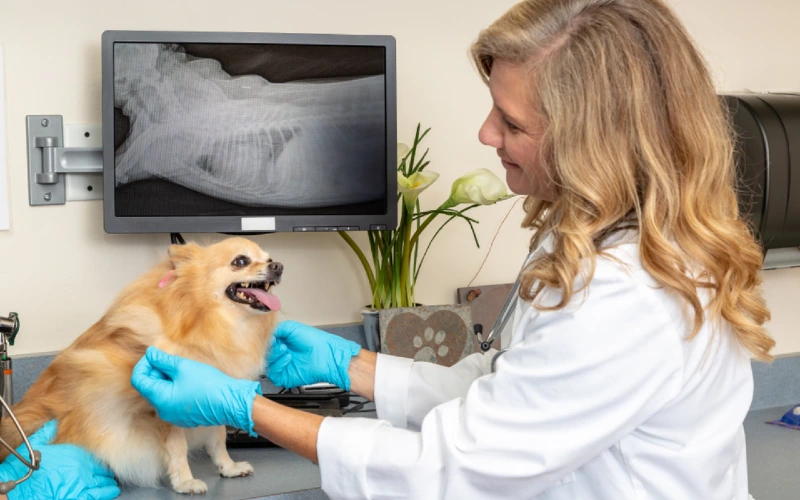
 Frequently Asked Questions
Frequently Asked Questions
How Long Do Veterinarians Go to School For?
Veterinarians have advanced degrees. They are required to have a standard bachelor’s degree, which typically takes 3–4 years. After that, they attend 3 years of vet school and an additional year of clinical practice. To become a specialist, a veterinarian typically attends an additional year of an internship in their specialty and 2–3 years of residency.

What Is the Highest Paying Veterinary Specialty?
On average, veterinary ophthalmologists make the most, with an average salary of $199,000. Other high-paying specialties include lab animal medicine, pathology, surgery, internal medicine, radiology, and theriogenology (reproductive specialty). (Liveabout)
Is It Hard to Get into Vet School?
Yes. Vet school entry is highly competitive, and the average acceptance rate for veterinary programs is 10–15%. What makes it even more difficult is the fact that there are only 32 veterinary programs in the US. (Zippia)
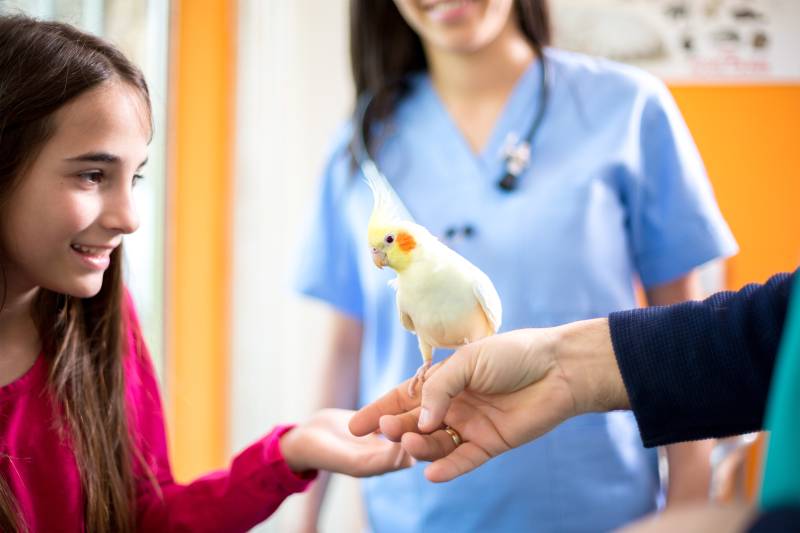
Do Veterinarians Work Long Hours?
Yes, many vets work long hours, especially those in private practice. Many veterinarians work regular work hours, as well as weekends, holidays, evenings, and even on-call hours.
 Conclusion
Conclusion
Vets are extremely important members of the job force. They work long hours in high stress environments, and vet school can be competitive and difficult to get accepted into, so it’s important to seriously consider your options before choosing to become a veterinarian. Getting your bachelor’s degree in pre-veterinary medicine can help boost your chances of getting into vet school, as well as help you be better prepared for the education and work required.
See also:
- How Is Inflation Impacting Pet Owners? Interesting Statistics
- Best Side Gigs for People Who Love Pets
- What And When Is World Veterinary Day
Featured Image Credit: Elnur, Shutterstock
 The 10 Statistics About Becoming a Vet
The 10 Statistics About Becoming a Vet
 Frequently Asked Questions
Frequently Asked Questions